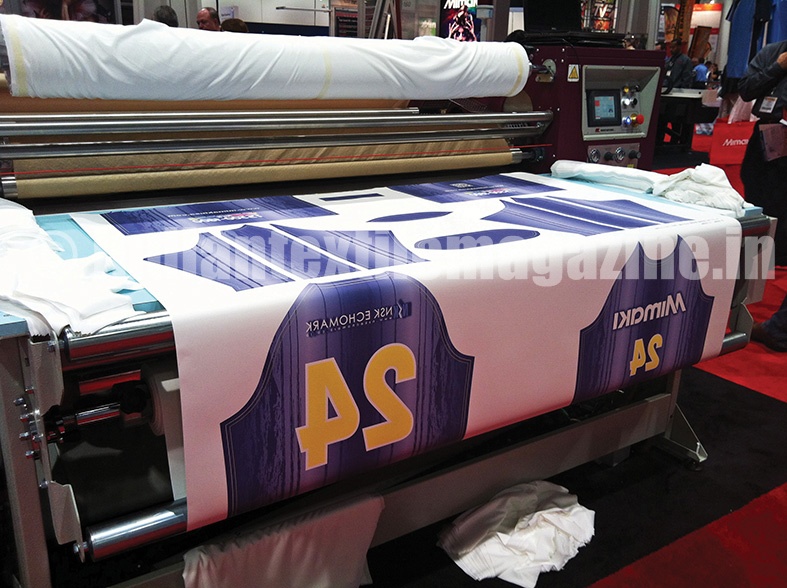By Rob Fletcher
With the sports industry serving as a very profitable market itself, the sector also offers many opportunities in terms of digital textile print.
Whether it is major sponsorship deals or lucrative television rights contracts, the professional sports industry is one growth sector that shows no signs of slowing down. Athletes and teams across different sports are benefiting from a strong commercial interest in this market from various industries, including the print industry.
Printing has a major role in the sports industry, especially when it comes to placing of sponsors for a team’s jersey. After all, without printing technology clubs won’t be able to carry around the logo of companies that, in some cases, pump millions of pounds into the team each year.
Booming sector
One such speaker is Paola Bonfanti, Special Content Director at the 4IT Group, who addresses a range of subjects at a dedicated panel session at the conference. Focusing on the latest technological developments of technology within the digital textile print sector, Bonfanti and the panel considered the most recent changes and the impact these will have on both printers and end-users.
“The direct-to-textile sector is currently booming. This is a market that has kept growing over the last 15 years or so, affecting the paradigms of the textile industry at large,” Bonfanti said.
“The capability of reproducing even very complex designs in different formats, a significantly reduced time-to-market, the flexibility of the production setting as well as the optimisation of environmental and economic impacts are among the major virtues of direct-to-textile technologies. While there are some applications that will stick to paper transfer technology, the market keeps moving to a truly digital process.”
“Further developments toward higher productivity, the expansion of the colour range and enhanced capabilities to produce enriching effects is to be expected.”
Focusing more on the sports sector of the wider market, Bonfanti offered her own viewpoint on this area, paying attention to some of the more recent changes that those interested in diversifying into this sort of work should pay attention to.
“The technical and sports clothing sector is historically tied to dye sublimation transfer printing,” Bonfanti said. “It’s this technology, which has continued to reinvent itself over the years, that has introduced the possibility of personalising sportswear garments, aligning the sector with the transfer of demand from mass production to mass personalisation.”
“From the point of view of trends, the sports clothing sector has always favoured highly concentrated colours for full field prints, while for the textiles the combination with dye sublimation transfer printing has led to the overturn of synthetic fibres. The most recent technological developments concern the use of transfer papers that are increasingly light and low coating, and they also relate to the rapid spread of high productivity printing systems, which is a trend that involves the big sports brands most of all,” she added.
Research the market and respond to trends
Having acknowledged a significant level of demand in the sports sector of the direct-to-textile market, Bonfanti went on to consider whether expansion into this area could be a good move for the more traditional print company.
“Moving into sports textile could be considered as a way to expand and diversify the product portfolio, which is what the market requires,” Bonfanti commented. “However, the move would require the acquisition of a specific know-how.”
With this in mind, she also highlighted some of the recent technological changes in the sports market and noted how those involved in this type of work can take advantages of these advancements to capture a greater market share.
She observed: “The most recent technological progresses concern the use of transfer papers that are increasingly light and low coating, as well as the development of fluorescent inks for sublimation print. These trends should continue, together with a rapid spread of high productivity printing systems, which is a trend that involves the big sports brands most of all. In addition, environmental requirements and functional needs will be set as priorities in the technological innovations that will lead the market over the next 12 months.”
With sport serving as one of the most profitable markets, not just in terms of print but a whole host of other industries, show visitors were well advised to find out as much as possible from experts before making a move into this exciting area.
Bonfanti has already picked out potential for success in the sports sector of print, and also highlighted the need for printers to properly research the market before making any move.
